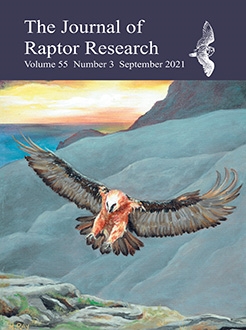Vulture and condor populations have declined dramatically due to consumption of livestock contaminated with pharmaceuticals, secondary poisoning from lead ammunition, retaliatory poisoning from loss of livestock, the use of vulture body parts for religious practices, and fatal interactions with electrical infrastructure. The Asian and African vulture crises have stimulated research and conservation actions including a comprehensive Multispecies Action Plan for African-Eurasian Vultures that provides a blueprint for conservation action. However, research and conservation efforts for vultures are fraught with challenges at political, continental, and grassroots levels. These challenges span national and international borders and encompass continental differences in the impacts to specific species of raptors as well as other wildlife. Yet there are reports of increasing numbers and potential solutions involving international collaborations and consortia. At the 2019 Raptor Research Foundation meeting, we convened a special symposium to address the conservation and viability of vulture populations, with attention to the critical role of vultures in maintaining ecosystem health as related to human communities and sustaining wildlife. This special issue of the Journal of Raptor Research grew out of that symposium and details some of the underlying challenges that have resulted in vultures being the most threatened group of birds globally.
With the goals of highlighting challenges that researchers and conservationists face and sharing success stories, this symposium also encompassed interdisciplinary perspectives, which are critical for making informed management and policy decisions. Speakers addressed socioenvironmental factors, poaching and trafficking, and data on trends that are critical to developing current policies. The human factor—a powerful driver in the human-wildlife-ecosystem relationship—was also considered, along with approaches to organize information, and understand interrelated outcomes. The last five years has seen a significant increase in the number of published papers focused on the conservation of vultures globally, especially the impact and mitigation of the major threats such as poisoning and electrical infrastructure, the identification of key geographical areas of conservation importance, and the assessment of the ecosystem service provided by vultures to the environment and humanity.
The manuscripts contained in this special issue of the Journal of Raptor Research span most of the numerous topics described above, and all are pertinent to the ecology and conservation of condors and vultures (Old World and New World). These contributions provide insights into the environment and challenges facing vulture and condor populations in Africa, Europe, and the Americas. The range of topics includes (1) role of vultures in ecosystem health (van den Heever et al. 2021); (2) breeding success of wild Cape Vultures (Gyps coprotheres; Goikantswemang et al. 2021) and foster parenting success of captive California Condors (Gymnogyps californianus; Granthon et al. 2021); (3) movement ecology of Griffon Vultures (Gyps fulvus; Fluhr et al. 2021), Cinereous Vultures (Aegypius monachus; Efrat and Hatzofe 2021), and California Condors (Hall et al. 2021); (4) threats from poisoning (Méndez et al. 2021) and observations of mixed-sex phenotypes (Alcarcón and Ignazi 2021) in Andean Condors (Vultur gryphus); (5) threats to African vultures from traditional medicine (Mashele et al. 2021a, 2021b); (6) impacts of non-steroidal anti-inflammatory drugs (NSAIDS) to Old World vultures (Jimenez-Lopez et al. 2021); (7) hurricane disturbance of vultures in Mexico (Martínez-Ruiz et al. 2021); (8) ethical perspectives of individuals working in vulture conservation (Yee et al. 2021); (9) predation pressure on Turkey Vultures (Cathartes aura; Platt et al. 2021); and (10) a One Health strategy for vulture conservation (Ottinger et al. 2021). We are delighted to present this special issue of the Journal of Raptor Research as a source of in-depth information useful to our scientific community, as a resource to managers and public officials, and as a contribution to effective global coordination in conserving vulture populations.





